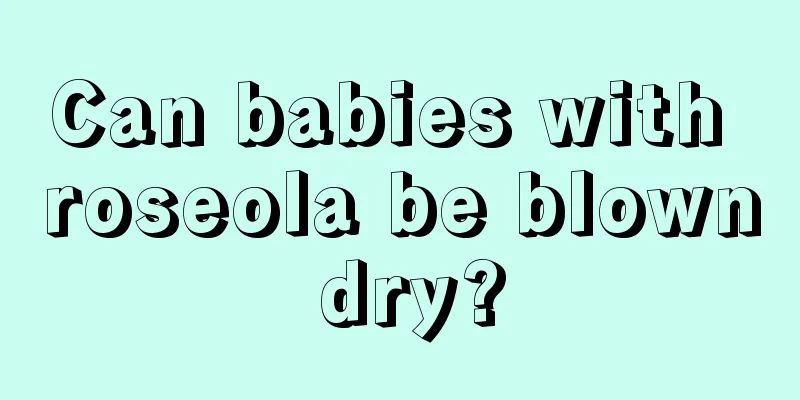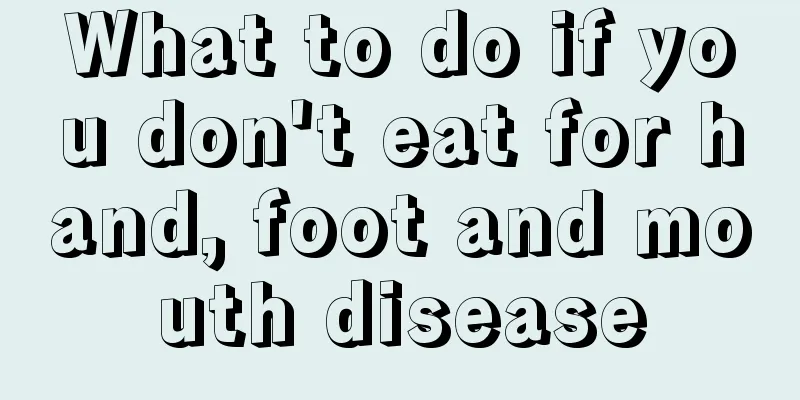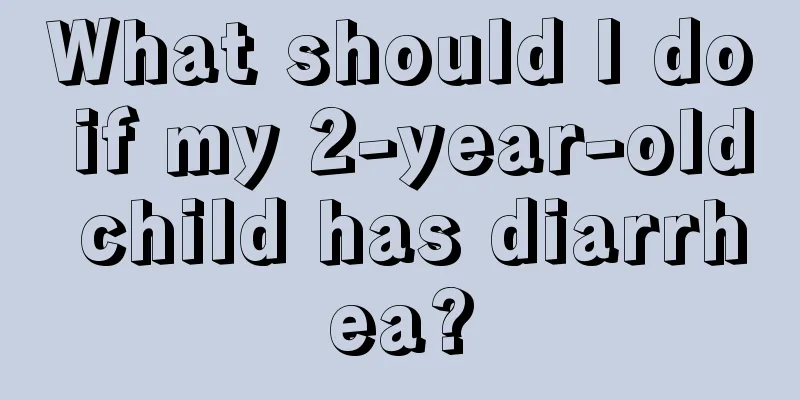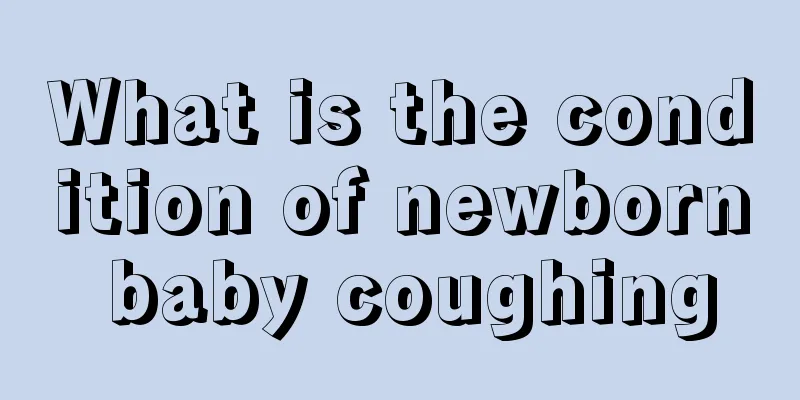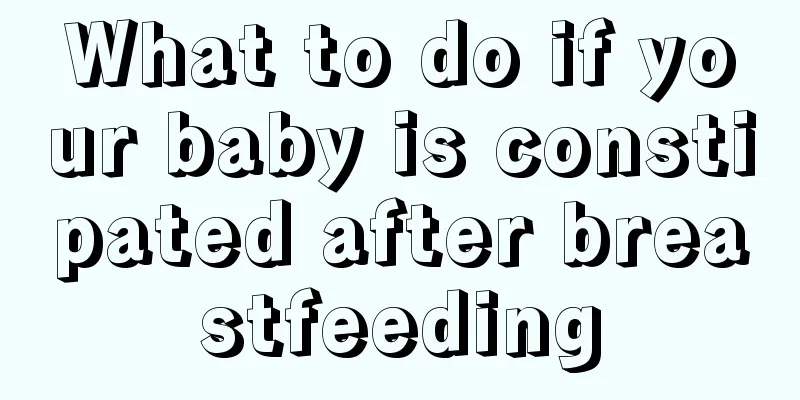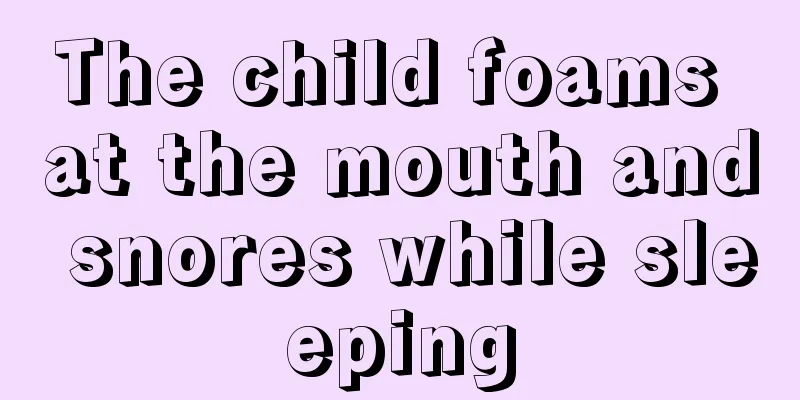What are the symptoms of a child having a fever and convulsions?
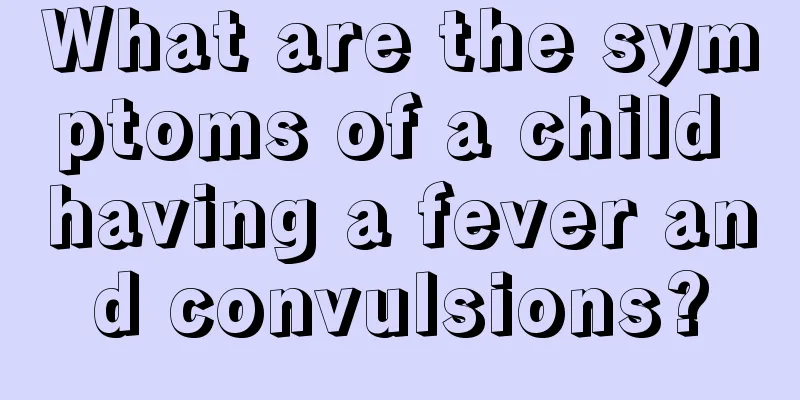
|
Fever is a common health hazard in children, and there are many causes of fever. However, no matter whether the child has a low fever or a high fever, it needs to be taken seriously. Generally speaking, when there is a persistent high fever, it is easy to cause convulsions, which will pose a greater threat to the child's health. It must be detected in time. So what are the symptoms of a child's fever and convulsions? A few people may have signs before an attack: extreme irritability or "startling" from time to time, mental tension; frightened expression, sudden increase in muscle tension in the limbs; sudden rapid, paused or irregular breathing; sudden rise in body temperature, drastic change in complexion; pupils of different sizes; and uneven edges. Typical manifestations are sudden onset, loss of consciousness, head tilted back, fixed upward or squinting eyes, foaming at the mouth, clenched jaws, and clonic or tonic convulsions of the facial or limb muscles. In severe cases, neck stiffness, opisthotonos, irregular breathing, cyanosis, or incontinence may occur. The duration may be from a few seconds to several minutes or longer. Then turn into drowsiness or coma. Examination during or shortly after an attack may reveal signs such as dilated pupils, slow reaction to light, and positive pathological reflexes. Consciousness is restored shortly after the attack stops. It is common in children between 6 months and 4 years old. Convulsions usually occur in the early stage of fever and are short-lived. It is rare for multiple seizures to occur consecutively during a single febrile illness. It often occurs within 12 hours of fever. Consciousness recovers quickly after the attack, and there are no positive neurological signs. The EEG returns to normal one week after the fever subsides. This is a simple febrile convulsion with a good prognosis. The onset age of complex febrile seizures is uncertain, often occurring before 6 months or after 6 years of age. Initially, it is a high fever seizure. After several seizures, convulsions may occur with low fever or even without fever. Sometimes, the seizures occur repeatedly, and each seizure lasts longer, more than 15 minutes. The EEG examination is still abnormal 2 weeks after the seizure, and the prognosis is poor. The probability of developing epilepsy is 15% to 30%. The above article gives a clear introduction to the symptoms of children's fever and convulsions. According to the symptoms, we can not only observe the condition well, but also provide a basis for the diagnosis of the disease. Of course, high fever convulsions are still very dangerous. Family members must take emergency measures to truly help children overcome difficulties and return to a healthy life. |
<<: How to prevent febrile seizures in children?
>>: What should I do if my son has a fever and convulsions?
Recommend
A one-year-old child has a lump on the right side of his neck
If a one-year-old child has a lump on the right s...
Newborns have coffee spots on their faces. What you need to know about coffee spots
Café au lait spots are a type of spot caused by g...
What are the methods to cultivate children's nap habits?
The most annoying thing is that many children cry...
How long does amoxicillin remain in a child's body after four days of anti-inflammatory injections?
Generally, anti-inflammatory drugs and other drug...
Is the baby's head shape natural or caused by sleep?
Many people may have the impression that babies l...
Is it okay for children to fart?
Everyone's physical condition is different, a...
What to do if your baby has a urinary tract infection
Some babies are suffering from diseases, so they ...
What to do if your 10-year-old child vomits
There are several factors to consider when vomiti...
How to dress a two-month-old baby in winter
The weather in winter is relatively cold. When th...
Two month old baby has yellow watery stool
If the stool of a two-month-old baby is yellow wa...
What should I do if my child has phlegm in his throat?
When children are young, they always suffer from ...
How to treat toothache in children
Toothache in children is a relatively common dise...
50-day-old baby is restless when sleeping. Is it calcium deficiency?
There are many cases of 50-day-old babies sleepin...
Two-year-old baby has thick white tongue coating and bad breath
If a two-year-old baby has a tongue coating, he s...
Does a slow fetal heart rate have any impact on the fetus?
A slow fetal heart rate generally has no effect o...
